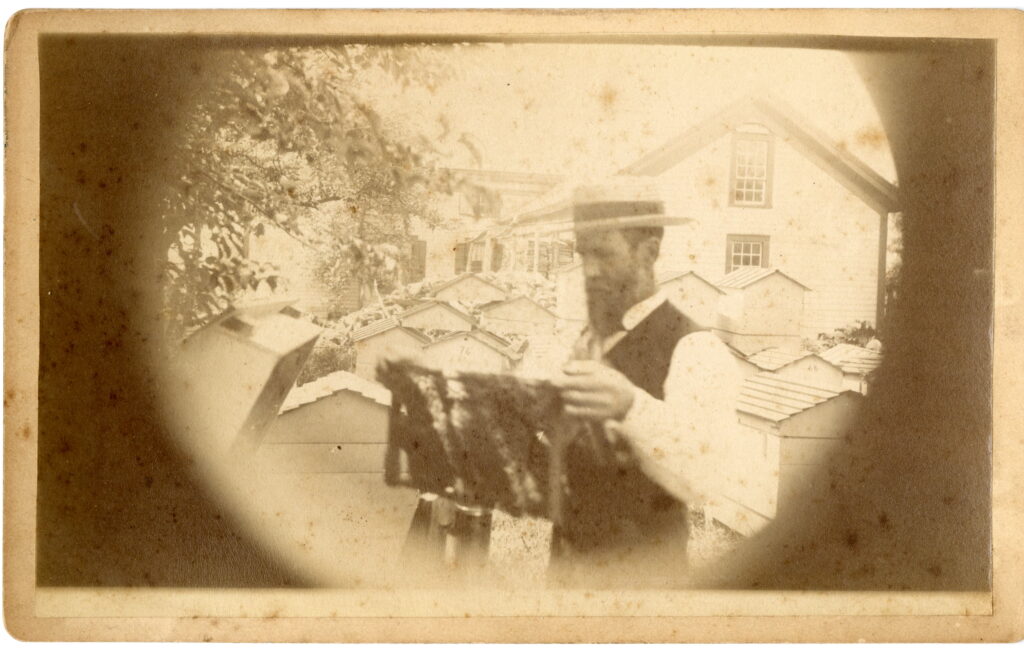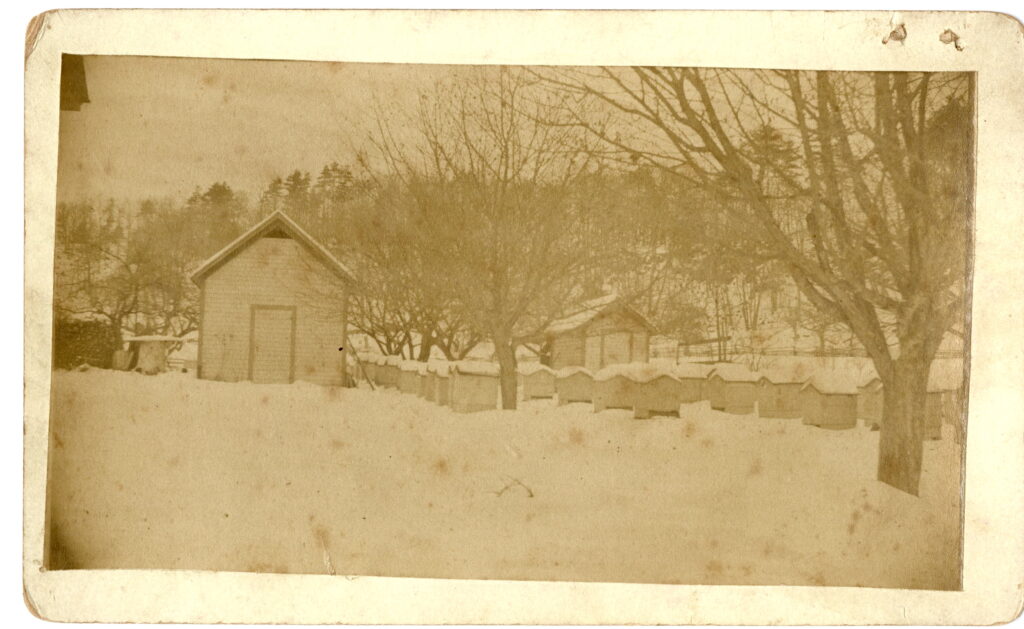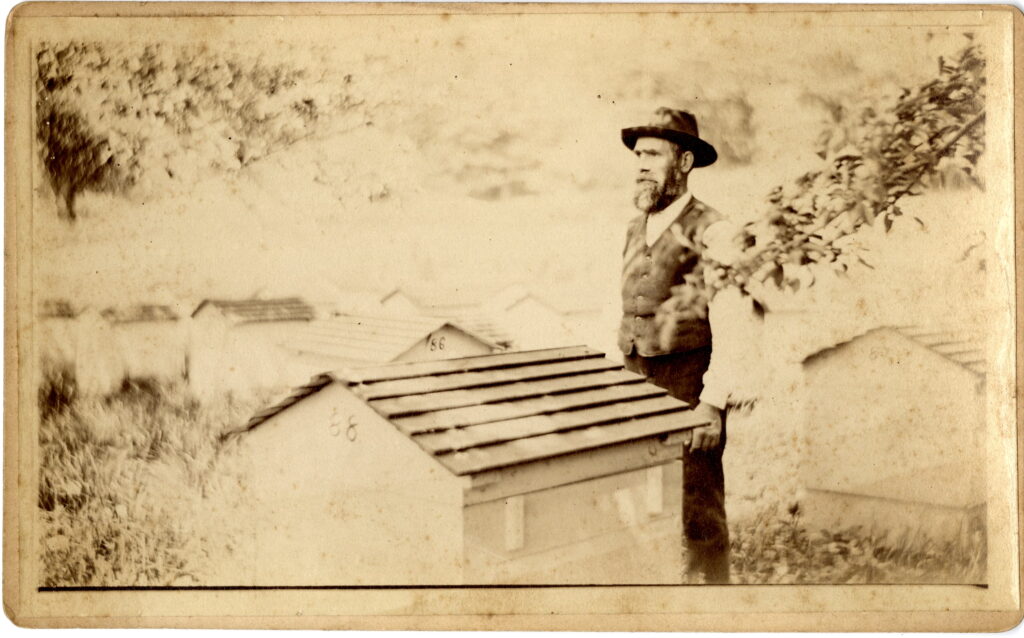When Bill Mares and Ross Conrad were doing research for their 2018 book, The Land of Milk and Honey: A History of Beekeeping in Vermont, they discovered a number of helpful resources in Silver Special Collections. Unfortunately, we found few photographs of Vermont beekeepers or their apiaries. So we were excited last month when a researcher and friend of Special Collections brought us a donation of miscellaneous items that included three photographs of Volney N. Forbes and his West Haven, Vermont apiary.
Volney Forbes in the bee yard. For recordkeeping, Forbes painted the number of each bee colony on the gable end of the wooden hives.
Volney Forbes was born in West Haven in 1832 and lived there all his life. When he died in 1915, the Rutland Daily Herald (August 16, 1915) reported that Forbes had held all the town offices, was town clerk and treasurer for thirty years and served a term in the Vermont legislature. He was a member of the West Haven Grange and the Vermont Bee Keepers Association, “being one of the most successful bee keepers in the state.” Honey was just one of the products Forbes raised on his 135-acre farm. He was also a breeder of fine merino sheep and registered pure bred Jersey cattle.
 Forbes inspecting a frame from a hive.
Forbes inspecting a frame from a hive.
At the 1906 Vermont Bee Keepers annual meeting, Forbes gave a presentation on “Short Cuts in Bee Keeping.” His methods must have been successful, as his production increased significantly over time. The 1880 agricultural census indicates that his bees produced 300 pounds of honey in 1879. Thirty years later, the Fair Haven Era (September 10, 1910) reported that Forbes, “the leading raiser of honey in this vicinity has three tons of best quality honey ready to ship to the Boston market.” According to Forbes, the 1910 season had been a good one though not better than some past years. In October 1915, seven tons of comb honey were shipped from West Haven to Philadelphia. The honey shipped by a Mr. Greenleaf “was partly from the apiary of the late Volney N. Forbes for many years the most noted bee man of this section” (Fair Haven Era, October 28, 1915).
 Volney’s apiary in winter. Spaces between the double walls of the hives were filled with chaff or sawdust that helped protect the bees during cold weather. The buildings may be a honey room and a work room, used to store honey and equipment.
Volney’s apiary in winter. Spaces between the double walls of the hives were filled with chaff or sawdust that helped protect the bees during cold weather. The buildings may be a honey room and a work room, used to store honey and equipment.
Submitted by Prudence Doherty, Public Services Librarian

